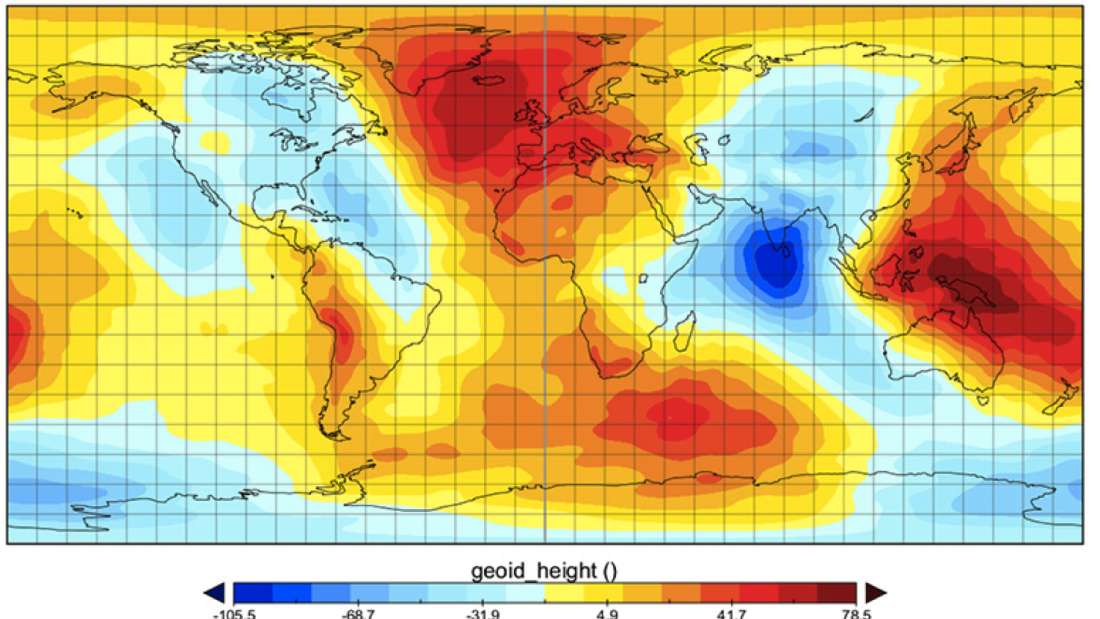No matter what you might have learned in physics lessons, the Earth is not a perfect sphere. The gravitational potential across its surface can vary quite a bit, due to the density of the material under your feet. Whether you’re in Melbourne or Montreal, you might have different material below you.
The map of this gravitational potential is called the “geoid” and it reveals something quite peculiar – there’s a big chunk of mass missing underneath the Indian Ocean. Its cause has been an enduring mystery, however researchers now suggest that the mantle beneath the Indian subcontinent has a lot more hot and light material than expected. The new research is reported in Geophysical Research Letters.
“The existence of the Indian Ocean geoid low is one of the most outstanding problems in Earth Sciences,” lead author Professor Attreyee Ghosh, from the Indian Institute of Science, said in a statement. “It is the lowest geoid/gravity anomaly on Earth and so far no consensus existed regarding its source. It is remarkable as it means that there is some mass deficit in the deep mantle that’s causing the low.”
If the ideal geoid is seen as a perfect sphere, the Indian Ocean geoid low (IOGL) would be equivalent to a depression of over 100 meters (328 feet). Scientists had previously suggested that beneath the cause of the anomaly was an ancient oceanic plate that sunk below the Indian plate millions of years ago. This explanation left many unconvinced and the team searched for alternative ideas. They looked at how seismic waves propagate through the Earth’s interior and found that there seemed to be low-density material under the IOGL. But where does that material come from?
They believe it comes from the African superplume, a large upwelling in the mantle that is literally (but slowly) splitting Africa apart. The hot material from the superplume appears to be getting deflected eastward and stopping at the IGLO.
“Most of the existing theories have tried to explain this negative anomaly with the help of cold, dense oceanic plates that sank into the mantle in the past,” says Professor Ghosh. “Our study explains this low with hotter, lighter material stretching from a depth of 300 kilometers (186 miles), up to ~900 kilometers (~559 miles), in the northern Indian Ocean, most likely stemming from the African superplume.”
The team plans to study how the IOGL has evolved over time in the hopes that this will provide more supporting evidence for their hypothesis.
Source: iflscience.com
Ask me anything
Explore related questions





